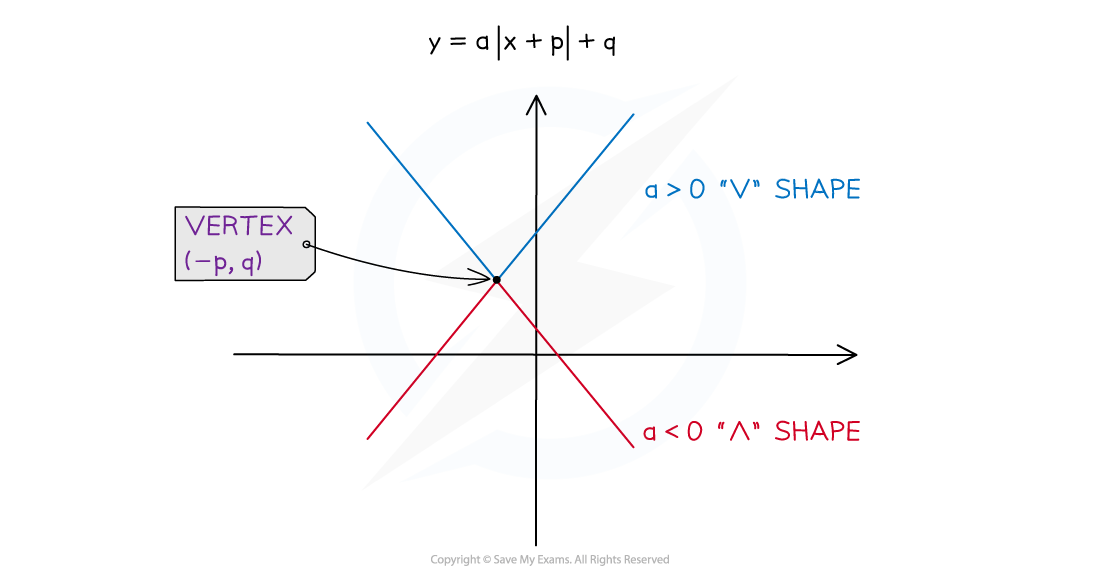Modulus Functions (DP IB Analysis & Approaches (AA)): Revision Note
Modulus functions & graphs
What is the modulus function?
The modulus function (or absolute value function) is defined by
which gives the positive distance (or size) of a real number
from zero
e.g.
It can also be defined as
or
Its largest domain is the set of all real values
and its range is the set of all real non-negative values
Examiner Tips and Tricks
It is common quick way of saying is "
equals mod
".
How do I sketch the modulus function?
The graph of
is the line
for
and
for
giving it a V-shape
with its vertex at the origin
The function is continuous
but not differentiable at
as no gradient exists there

How do I sketch y = a|x + p| + q?
The graph of
is a transformation of the graph
as follows:
First, apply a vertical stretch of scale factor
to
Secondly, apply a translation of
This transforms the vertex
on
to
the new vertex at
on
Examiner Tips and Tricks
A lot of students get the sign of wrong when finding the vertex coordinates
from
.
Note that
means a
shape
the bigger
the steeper the
means a
shape
the more negative the
the steeper the

How do I rearrange a graph into the form y = a|x + p| + q?
Two useful modulus relations for rearranging are
e.g.
can be rearranged as follows:
using
by factorisation
using
and
giving

You've read 0 of your 5 free revision notes this week
Unlock more, it's free!
Did this page help you?